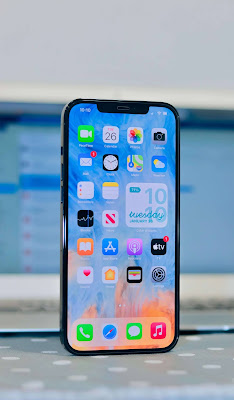Chinese smartphone brands have started dominating the international smartphone market over recent years.
 |
| [Xiaomi smartphone/Pexels] |
For the past ten years, Apple and Samsung have dominated the global smartphone industry.
However, in recent years, Chinese smartphone manufacturers have taken a larger share of the market.
Xiaomi, Oppo, and Vivo may not be household names outside of China, but their smartphones are strong and affordable, making them increasingly appealing to users all over the world.
Read More: The Future Of Bitcoin
Samsung, of South Korea, took first place in global smartphone shipments in 2020, with more than 255 million units shipped. With 207 million phones shipped, Apple came in second.
However, Chinese brands Huawei, Xiaomi, and Oppo rounded out the top five, each shipping over 100 million smartphones in 2017.
One of the reasons why Chinese smartphones have become so popular is that, unlike the top brands, they offer a wide range of models. Chinese phone companies do not only release one or two premium flagship models each year.
They also produce low- to mid-range phones with premium features that are less expensive than flagship phones. Because of their affordability, Chinese smartphones have seen a significant increase in sales, especially those that can support next-generation 5G networks.
Affordable 5G phones
Although the first 5G smartphones were all high-end models, Chinese manufacturers have been disrupting the industry. Xiaomi is expected to release a $300 5G phone in the first quarter of 2020. Throughout the year, other Chinese brands such as Oppo, Vivo, and Honor also offered affordable 5G smartphones.
After seeing good sales of Chinese mid-range 5G smartphones, Apple and Samsung followed suit. However, these high-end brands found it difficult to compete on price with their Chinese counterparts.
In the fourth quarter of 2020, Apple released its first 5G smartphone, the iPhone 12. Apple also launched four models for the first time in history to compete with other brands’ mid-range to high-end offerings.
 |
| [Apple iPhone 12/Pexels] |
Apple had sold 81 million iPhones by the end of the fourth quarter of 2020, while Xiaomi, Oppo, and Vivo had sold over 100 million smartphones.
The competition of flagship smartphones
Chinese brands are chipping away at Apple and Samsung’s dominance, and cheaper versions aren’t the only reason.
China’s flagship phones also have features that compete with iPhones and Samsung’s Galaxy S21 series.
Every year, Chinese brands, including the industry leaders, add new cameras and screen technology to their flagship models.
They do, however, often launch new innovations ahead of the big brands.
When it comes to camera technology, Chinese manufacturers go above and beyond, collaborating with top photography brands including Leica, Hasselblad, and Zeiss to create a more professional experience and higher image quality.
Most Chinese smartphones have sharper displays with a high refresh rate, which allows for a smoother scrolling experience. Users often select phones with powerful features and groundbreaking designs for Chinese flagship models with price tags that are comparable to those of the larger brands.
Chinese companies have also pioneered advances in camera and screen technology, such as foldable phones.
Oppo also produced the first rollable smartphone in the world. Although the Oppo X 2021 is still in the design stage and may be a long way from commercialization, it demonstrates how Chinese companies are attempting to keep up with Apple and Samsung in the race to develop next-generation smartphones.
In the way it produces low to mid-range smartphones at affordable prices, global market leader Samsung has a lot in common with Chinese smartphone firms.
Samsung has also advocated for technologies such as foldable phones, which are one of the newest smartphone trends.
Smartphone security issue
Some Chinese smartphone manufacturers’ growth rates have slowed as a result of security concerns posed by some governments.
The US government expressed concerns in 2019 about Huawei technology and goods being used by China for espionage. The United States had no hard evidence, and Huawei flatly denied the charges. The Chinese company was barred from doing business with American companies.
As a result, Huawei phones are no longer able to use Google apps, which is a major setback for the company’s tech ecosystem. Outside of China, Huawei’s smartphone sales plummeted in 2020.
After being found to have breached sanctions by exporting technology to North Korea and Iran, US suppliers are now prohibited from exporting components to ZTE, a Chinese smartphone manufacturer.
Future of Chinese smartphones
Despite these obstacles, other Chinese smartphone brands such as LG, HTC, Sony, Nokia, and Motorola have grown in popularity and have surpassed some of the most well-known cell phone brands in the past.
LG recently revealed that it would no longer be involved in the cell phone industry.
Chinese smartphones have come a long way from the days when “Made in China” meant cheap and faulty electronics.
Over time, they’ve developed relationships with savvy consumers who prefer budget phones, and as a result, they’re giving more popular brands a run for their money.







+ There are no comments
Add yours